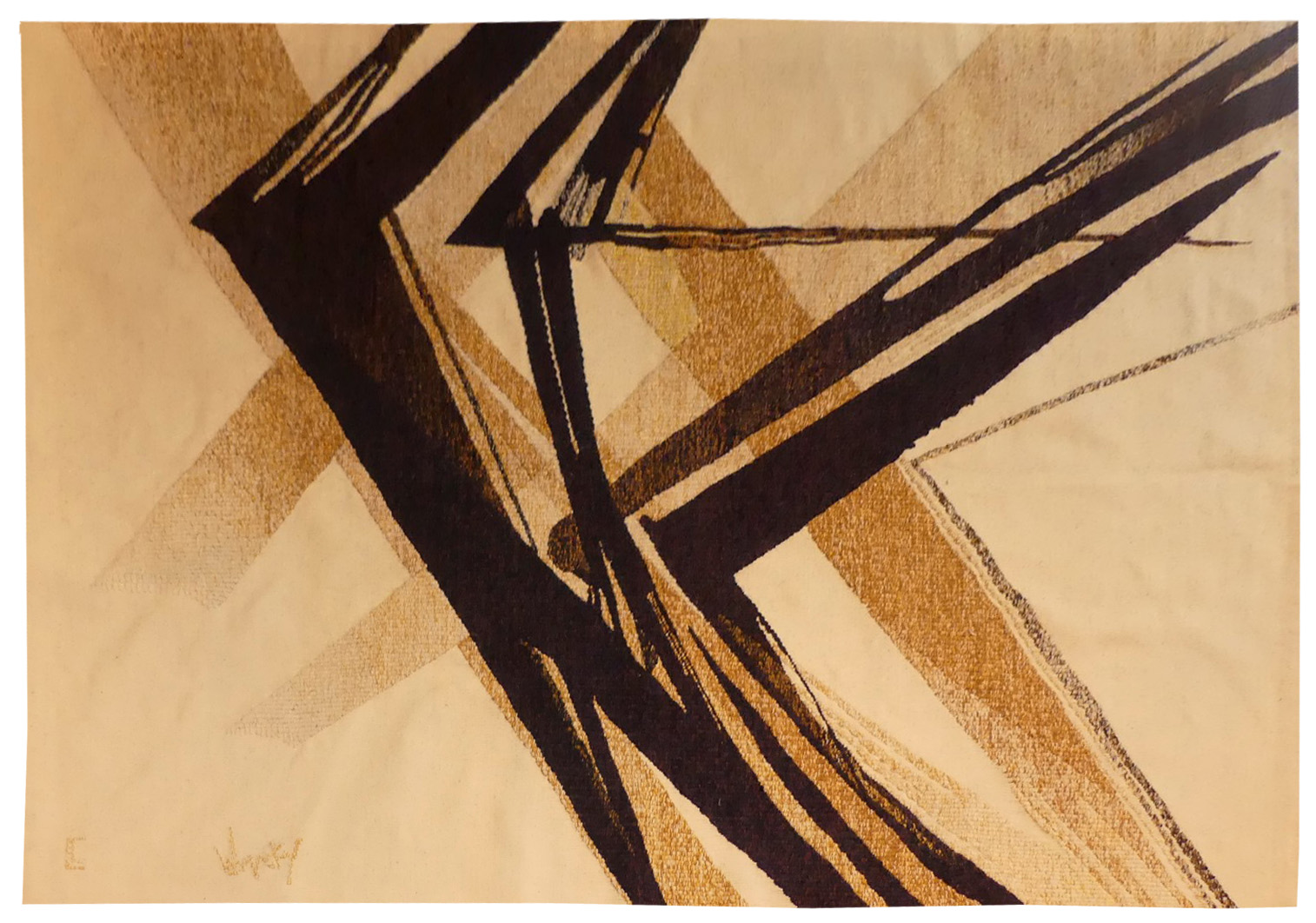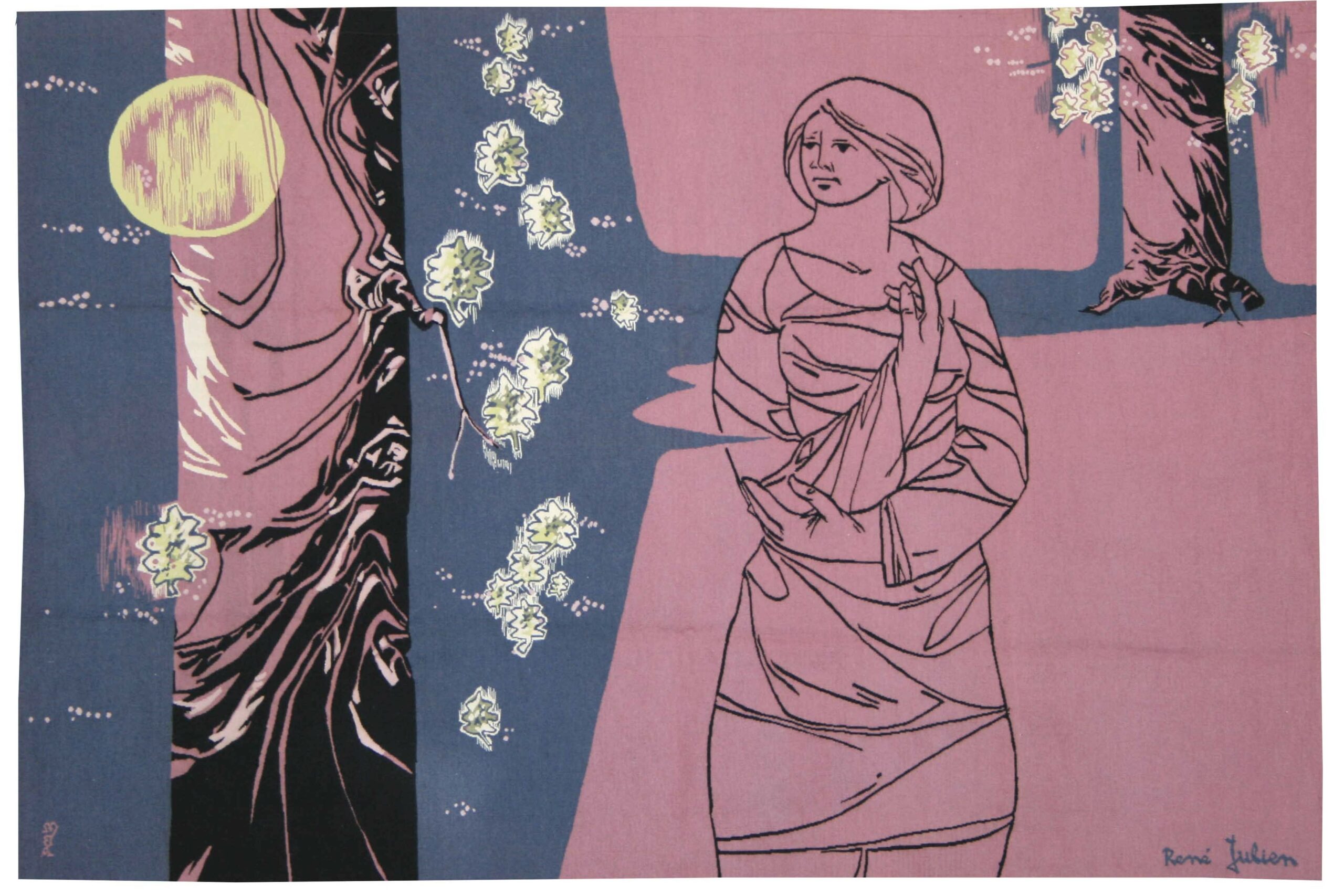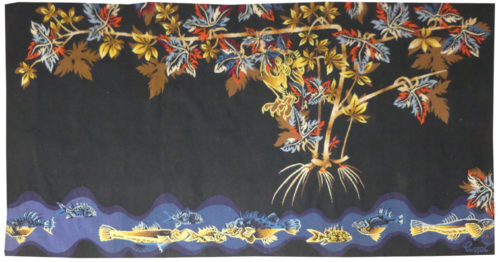Grand vol roux (great russet flight)
Aubusson tapestry woven by the Legoueix workshop.
With signed label, n°3/6.
1973.
A member of the A.P.C.T. (Association des Peintres-Cartonniers de Tapisserie), Wogensky is one of the many artists who would follow in Lurçat’s footsteps immediately after the war. At first influenced by his predecessor, Wogensky’s subsequent work (159 cartoons according to the 1989 exhibition catalogue) would evolve during the 1960’s towards a, not completely self-avowed, lyrical abstraction, from cosmic-astronomical themes expressed in decomposed, moving, birdlike shapes to cartoons both more refined and less dense. Although always claiming to be a painter, the artist’s conception of tapestry is extremely well thought out : “the realisation of a mural cartoon.... requires the consideration of a space which is no longer ours alone, by the nature of its dimensions, its scale, it also imposes a grand gesture which transforms and accentuates our presence.”
Birds emerge as a theme in Wogensky’s work at the end of the 1960’s. In reality, if the titles of his works refer to them, their representation remains allusive, closer to images of flight frozen in time than to ornithological treatises : it is movement in space that is important, hence the titles ‘vol ...’[flight]. At this time, Wogensky was interested in the material effects obtained by weavers through the use of different stitch sizes; this is what distinguishes "Grand vol roux" from the ‘Oiseaux de septembre' [September birds], a similar cartoon, from 1970, woven in a regular and smooth manner.
Bibliography :
Cat. Expo. Robert Wogensky, 20 tapisseries récentes, galerie La Demeure, 1973, reproduced n°10
Exhibition catalogue Robert Wogensky, Aubusson, Musée départemental de la tapisserie, 1989
Exhibition catalogue Robert Wogensky, Angers, Musée Jean Lurçat et de la Tapisserie Contemporaine, 1989




